Did you know plants can be chameleons? Look at these Succulents that Change Colors right before your eyes!
Just like how a little cortisol keeps us on our toes, a little stress can bring out the best hues in your succulents! We share varieties that respond to changes in their habitat by changing colors. If you want rainbow foliage in your home with the least effort, these are perfect!
Succulents That Change Colors
1. Ghost Plant
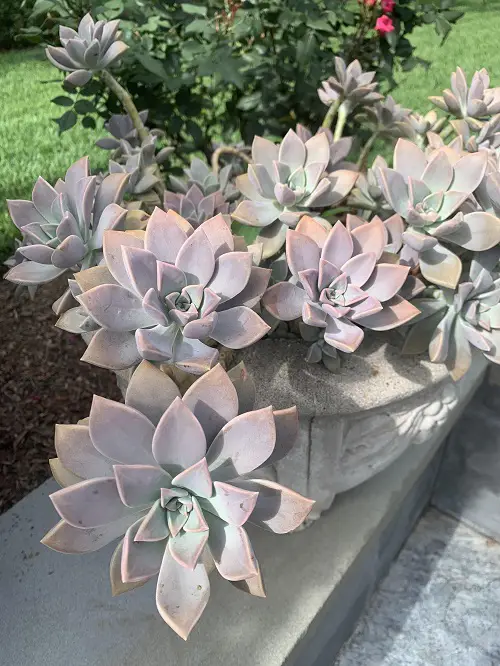
Botanical Name: Graptopetalum paraguayense
The ghost plant has pointed, pastel-hued, rosette-shaped leaves that change to pinkish-yellow when it gets dry and hot; it also happens when it is root-bound. In cooler, shadier settings, and when it is underwatered, it turns purple or bluish-gray. But don’t move the plant around too much—watch it gradually change colors with the natural flow of seasons.
Like most succulents, ghost plants don’t need much water. Allow the soil to dry completely between waterings.
2. Kiwi Aeonium

Botanical Name: Aeonium ‘Kiwi’
A compact rosette with lime green and bright pink edges, the plant’s tips turn a deeper red under full, dappled sunshine. And in shade, they turn lighter and more yellow and green. This succulent takes time to grow, reaching 2-3 feet in height.
It is also safe to grow around pets and kids, making it a perfect addition to your succulent collection. Remember to keep things gradual and avoid sudden changes in watering, sunshine, or temperature fluctuations, as it stresses quickly like other Aeonium species.
3. Sticks on Fire
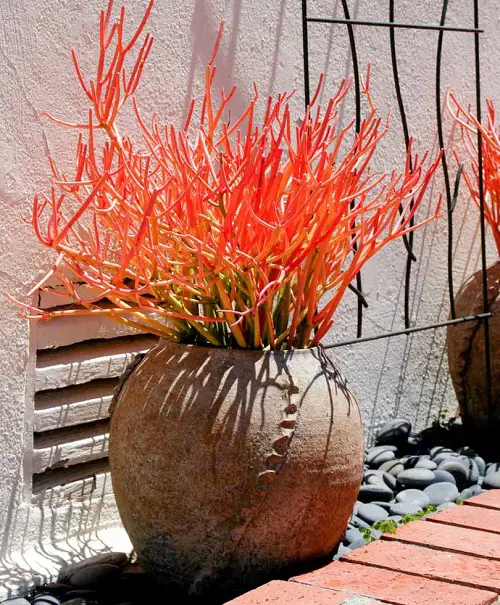

Botanical Name: Euphorbia tirucalli
This one perfectly fits our list of succulents that change colors! While yellowish in summer, it morphs through shades of gold, orange, and fiery red as we move towards winter. If it stays green throughout, it signals too much water and humidity. Direct sunlight, pot bound state and some other factors also encourage it to turn red!
With unique vertical stems that sport tiny leaves for short periods, pencil cactus is easy to care for and needs ample indirect sunshine for the brightest hues.
4. Perle von Nurnberg

Botanical Name: Echeveria ‘Perle von Nürnberg’
Producing symmetrical rosettes in lavender, deep purple, and pink, the Perle von Nürnberg is a must-have addition for any succulent collector. Edging towards shades of pink and purple under full sun, with pretty pink summer blooms, it turns paler in shade.
But the icing on the cake is this soft dusty coating called farina, which lends it a shimmer when light hits the leaves from different angles! This succulent thrives in bright light on cooler nights and needs to be watered sparingly.
5. Coppertone Sedum
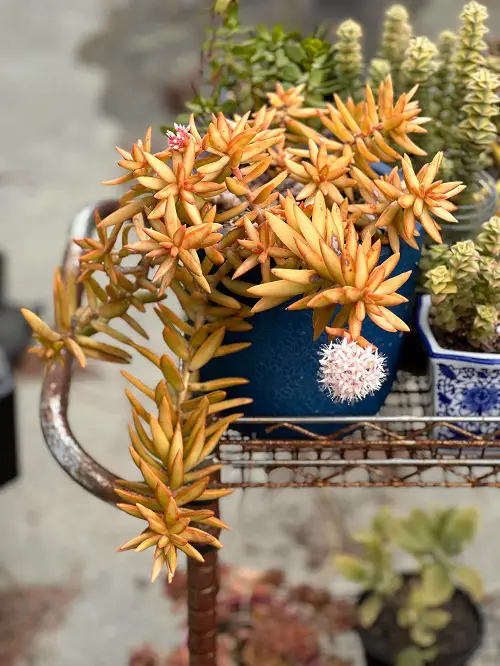
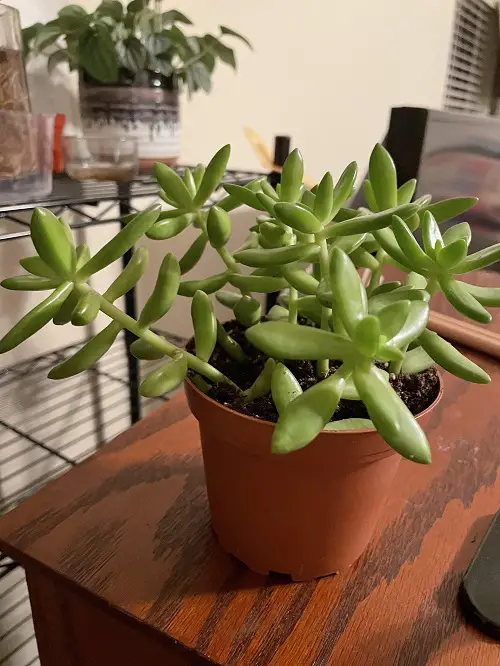
Botanical Name: Sedum adolphi
This unique succulent starts off a glossy green, but gradually, with exposure to ample sunlight, it takes on a golden hue with copper-orange leaf edges. If you are trying to alter its hues, expose it to different light settings slowly and steadily.
This plant does not like wet feet, so choose loamy soil to prevent root issues. You can slightly increase the soil pH to deepen its copper tones. This guide will help you grow and care for it.
6. Echeveria ‘Lola’
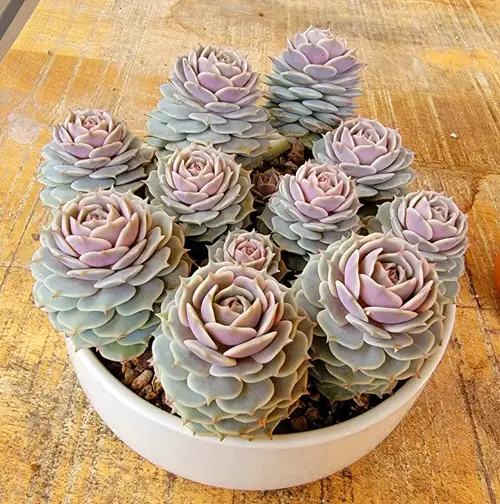
Botanical Name: Echeveria “lola”
Echeveria “Lola” features rosettes of lavender-blue leaves that turn pink at the leaf edges when exposed to more sunlight. Busy gardeners love this succulent due to its ease of care and low water requirements.
This variety cannot survive frost, but indoors, as long as you keep it on a bright window or under a grow light, it will surely thrive. Place it in a slightly smaller pot to stress its roots slightly, to intensify its colors.
7. California Sunset
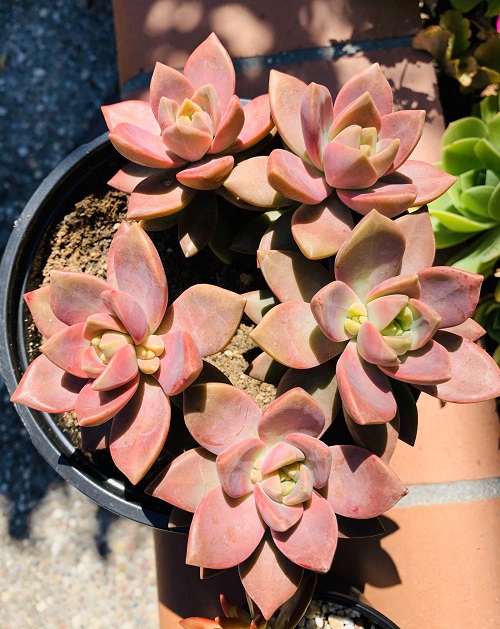
Botanical Name: Graptosedum “California Sunset”
This one is a hybrid of the two color-changing succulents mentioned above—ghost plant and Coppertone sedum—so imagine the impressive fusion of hues that lie in store for us! It starts as a green succulent that transitions to orange, pink, and even red as it receives sunlight, getting deeper and brighter with more sun and pastel with less.
Its colors become more vivid in sandy, well-draining soil. California Sunset has longer stems than other succulents, allowing it to “stand out” in any collection. This plant does well with infrequent watering and thrives on neglect.
8. Campfire Crassula

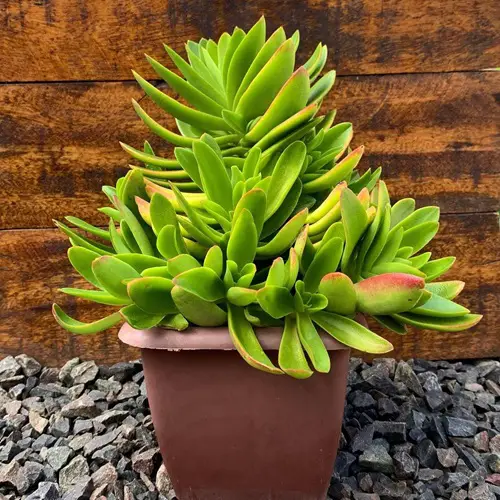
Botanical Name: Crassula capitella
Also known as the red pagoda, the vivid red and orange leaves of this succulent live up to any of its given names! From green to bright red and orange, it truly resembles a beautiful blaze in pots and containers, getting brighter with better airflow! In summer, it blooms with white flowers that uniquely contrast its red hues.
Remember to change light exposure gradually and let the soil dry out between watering spells.
9. Crosby’s Prolific
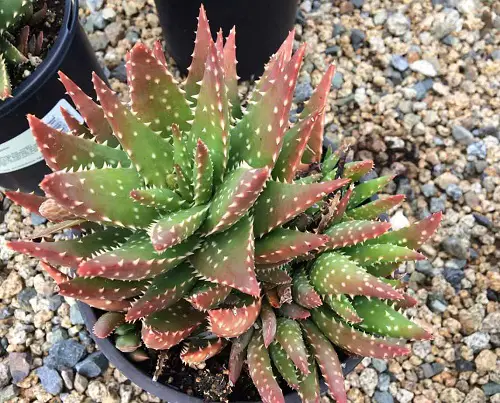
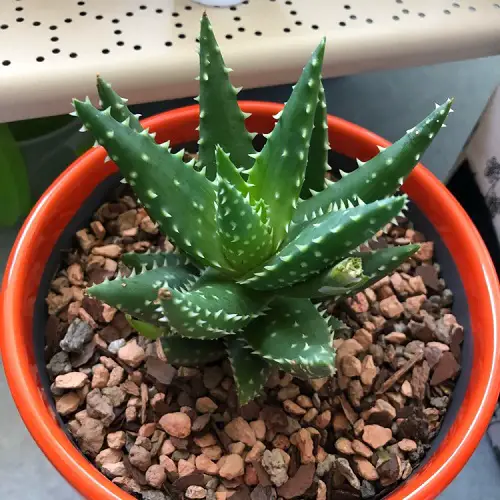
Botanical Name: Aloe “Crosby’s Prolific”
This aloe hybrid features narrow, spiky, upright leaves with white dots and teeth. This perfect centerpiece succulent turns salmon pink under the sun, decorated with red and orange flower spikes.
As this plant matures, the colors become more vivid, and you can cut back on watering at this stage.
10. Rainbow Echeveria

Botanical Name: Echeveria “Rainbow”
Like a real-life rainbow, this succulent wears several hues simultaneously in layers. When stressed under sunlight and changing temperatures, it takes on various shades of peach, pink, and green at different levels of its form. The changes in colors are enhanced by short periods of drought as well.
This plant grows best in any cactus or succulent potting mix as long as the soil is well-draining.
11. Elephant Bush

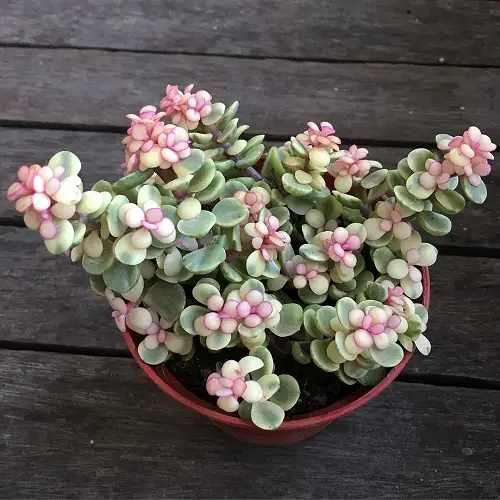
Botanical Name: Portulacaria afra
Looking just like jade plants, not all Portulacaria afra varieties change color, but there are some that change from green to red, purple, and pink under strong sunlight and changing weather.
12. Afterglow

Botanical Name: Echeveria ‘Afterglow’
Featuring rosette leaves with a tinge of blue, this plant gives off an “Afterglow” in cooler weather, bright light, and slightly acidic soil. Turning orange, pink, and other pastel warm tones on the spectrum, this one is a hybrid of Echeveria cante and shaviana.
While it prefers indirect light, most of its color changes occur when it is slightly stressed under full sun. However, to preserve its health, these transformations should be natural.
13. Jelly Bean Plant

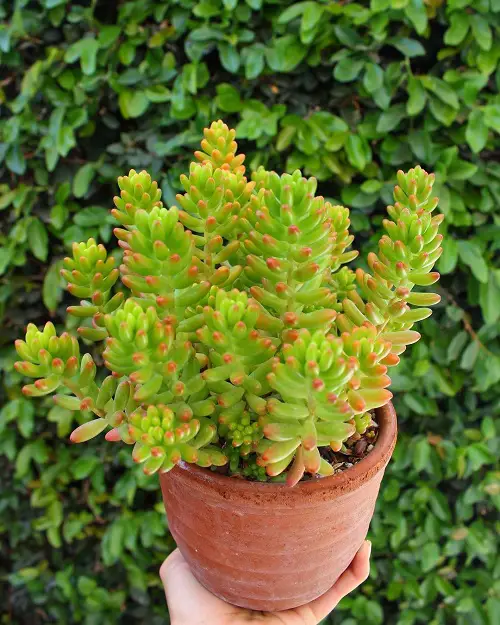
Botanical Name: Sedum rubrotinctum
This succulent’s small, jelly bean-shaped leaves fit perfectly in compact, confined spaces that desperately need some breathability and freshness. The round leaves are green, but they change into bright red under full sunlight and hot weather.
Once mature, place it in bright, indirect sunlight with occasional watering. It’ll thrive for many years. If you love sedums, check out this detailed list for your home.
14. Jade Plant
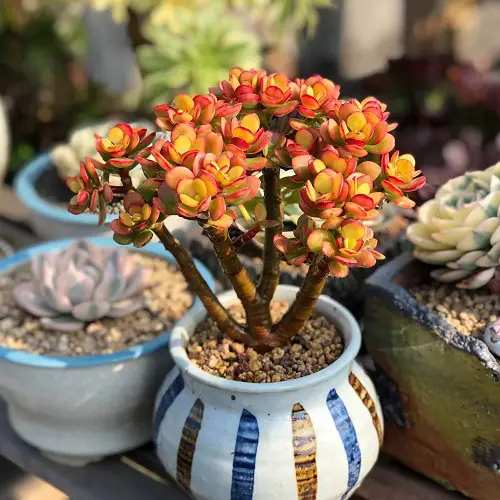
Botanical Name: Crassula ovata
Native to South Africa, jade plant is one of the most grown succulents around the world. It has thick, green, fleshy leaves, making it an eye-catching addition to pots with or without leaves turning red. It’s a popular houseplant, but did you know this succulent could change color?
It happens under stress—too much cold or drought in winter, for instance. You can even make it bloom.
15. Paddle Plant
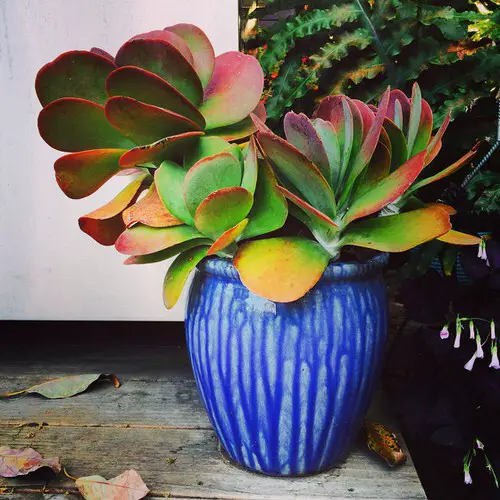
Botanical Name: Kalanchoe luciae
A paddle plant is an evergreen succulent with a rosette of thick, fleshy leaves coated with a powdery white coating. The paddle-like leaves are green, but they turn red at the edges when exposed to sunlight.
There are compact and bigger leaf-size varieties available, and you’ll love them all. This succulent changes color intensely as winter arrives.


